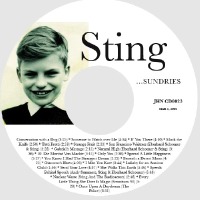As I alluded in passing last week, we made a pretty big personal purchase, finally replacing Lisa’s 12-year old Geo with a new car. We wanted something a little bigger for cargo considerations, as well as for more comfortably hauling more than two or three people—long car trips with her parents are sometimes a challenge in the Passat thanks to the limited storage space. So, reluctantly, we decided to go for an SUV (we aren’t quite ready for a minivan). But we didn’t want to compromise too much on gas mileage, especially in this post-Katrina world.
On a recommendation from Charlie and Carie we started out looking at the Toyota RAV-4, which has been redesigned this year. It’s much bigger, almost as long as a Highlander, and now has the option for a third-row seat—something that we felt might give us some additional flexibility and was also on our requirements list. Thanks to some clever engineering and flexibility in the on-demand AWD, Toyota claims to be able to squeeze 28 MPG highway/24 city from the 4-cylinder engine that’s the base configuration. Sounded great.
Unfortunately at this point the limits of Toyota’s product design process revealed themselves. Lisa wanted a moonroof but found out we couldn’t get it if we had the third row seat—something about the required headroom for the third seat being consumed by the space for the moonroof to retract. OK, not the end of the world. But the next point was. While it’s theoretically possible to order a RAV-4 Limited, which comes with side impact airbags unlike the base model, with a third row seat, no such models would be in the channel until late April. This was too much, and bad planning on Toyota’s part. After all, if you’re planning to carry older passengers or other extended family and thus need a third row seat, I would think the side impact air bags would be very important. Regretfully, we said goodbye to the RAV-4 and started looking at other options.
We briefly looked at the Subaru Tribeca, their new bigger SUV, but had to nix it; Lisa’s parents said the rear seat felt like sitting on two inches of padding on top of a steel plate, and described the ride in the back as very rough. So Lisa returned to Toyota and looked again at the Highlander Hybrid—and found that at the base trim level she could get a third row seat, side curtain airbags, and a moonroof. Problem solved, and with some aggressive negotiation we got a good enough deal on one that we were able to upgrade it with leather and heated seats.
So we now have a hybrid, with EPA numbers of 31 city/28 highway. We got closer to 24 on a shakedown drive on Saturday from Boston to Portland and back, but we weren’t driving especially cautiously, and early results gadding about Arlington have been very promising on the city side. We’re not foolish enough to believe we’ll totally recoup the cost difference in better mileage—although the payback calculations that are commonly used to determine such periods probably underestimate the five-year increase in gas prices—but as early adopters we feel like just investing in the technology will ultimately encourage the evolution of more efficient vehicles.
In fact, I’ve started to wonder if my beloved Passat might have to go for some smaller, more fuel efficient vehicle, now that we have a big family hauler. Too bad you can’t buy a passenger diesel in Massachusetts; the TDI version of the Golf sounds awfully promising…


